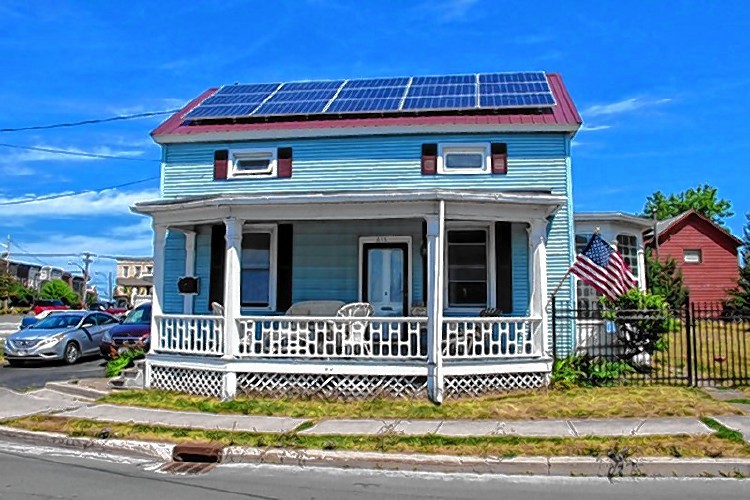In New England, there is so much “behind-the-meter” solar power that the maximum output is equivalent to Seabrook Station nuclear power plant – except when we really need it, that is. At that point, two thirds goes away.
This is the exciting-yet-sobering conclusion about solar power I got from the annual summer forecast produced by ISO-New England, which oversees the six-state power grid. (Here’s my story; the solar component is about two-thirds of the way down.)
ISO’s forecast report says that we have more than enough power production from all sources to handle even a long heat wave – hooray! – partly because we’ve done a good job cutting power usage with efficiency and demand response programs – double hooray! – and that there are enough rooftop solar panels around the region to produce 1,300 MW, slightly above Seabrook’s maximum – hooray again!
But here’s the rub: ISO only counts one third of that solar output – 423 MW – when considering what’s available to meet peak load, those moments during a summer heat wave when maximum air conditioning usage piles on top of everything else and we come closest to brownouts.
How come they count so little of it? Because, I was told, absolute peak grid loads happen between 3 and 5 p.m. on those hot days, while daily solar production peaks around 1 p.m. By 3 p.m., electricity output from rooftop solar panels is already on the downswing as the sun moves away from ideal orientation and starts slipping behind trees and buildings; if we count on having peak solar when we have peak need, we might be caught short.
This is the complication of solar power and why many utility folks regard it as a two-edged sword, at best. You can’t turn solar up when you really need it, the way you can dial up a gas turbine. (Flexibility is one of the great strengths of gas-fired power plants, above their relatively low construction and operation costs.)
A grid built on solar and wind will require big changes in the way society uses electricity. We will have to change our habits to meet the requirements of power production, whereas we’ve gotten used to changing power production to meet the requirements of our habits.
There would be huge benefits to doing this in terms of avoided costs from pollution and climate change, but those benefits are distributed, spread out over time and hard to measure – whereas the costs will be immediate, focused and easy to measure, as in “What do you mean I can’t run my factory at full blast tonight because there isn’t enough electricity?!?”
So hearing pushback against solar power doesn’t necessarily mean you’re hearing from a pawn of Big Oil; it might be from somebody who realizes that there’s going to be a lot of pain involved.


 Return to the Concord Monitor
Return to the Concord Monitor
“A grid built on solar and wind will require big changes in the way society uses electricity. We will have to change our habits to meet the requirements of power production”
Or, we need to find ways to store energy on a massive scale. It’s not impossible, and we aren’t limited just to batteries. A decade or two ago, I heard about a hydroelectric dam in California that actually pumped water up into the reservoir at night, when electricity rates were lower, and generated electricity in the day, when rates were higher – and they made a net profit. So the water in the reservoir was essentially a battery. Nowadays, with so much solar in California, the sensible thing would be to use solar energy to pump water into a reservoir during midday, and generate hydrolectric power when it’s needed.
You’re right that “pumped hydro” is great. From what I’ve read, it’s the cheapest large-scale energy storage method around.
The trouble is that it’s limited by geography: There aren’t that many places where you can store a gazillion gallons of water so that it can be moved around every day to extract energy. Where it’s feasible, it’s the best answer, but it’s just not feasible all that often.
Matching demand supply with renewables is currently a problem, but it’s a solvable one. There are varying ways to store energy and it’s a matter of money and engineering. Some say the cost is too high, yet ignore the full costs of other generation methods (massive toxic coal sludge waste, significant amounts of heavy metals released into the air, nuclear waste storage & security, massive water consumption by all Rankin based steam plants). Taking full costs into consideration, renewables with storage is competitive with traditional power generation. Then factoring in the enormous amount of pollution created by traditional power generation, renewables have the edge.